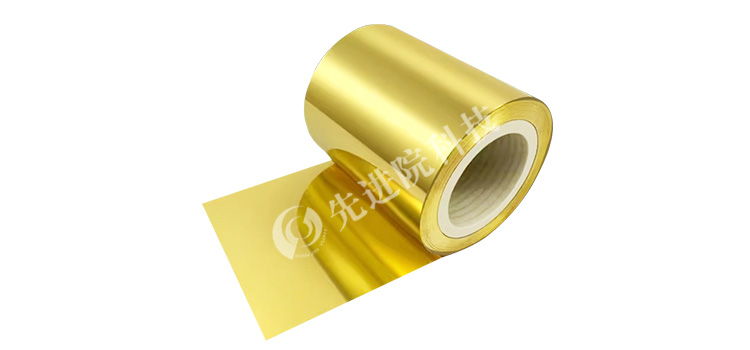

Hotline:0755-22277778
Tel:0755-22277778
Mobile:13826586185(Mr.Duan)
Fax:0755-22277776
E-mail:duanlian@xianjinyuan.cn
Materials such as PI PP/PET attach a conductive layer to the surface of insulating materials such as plastics to achieve shielding, and belong to shielding materials mainly based on reflection loss. Common preparation methods include chemical gold plating, vacuum spraying, sputtering, metal melting, and pasting metal foil. This type of surfaceConductive thin film shielding materialIt generally has the advantages of good conductivity and obvious shielding effect, but its disadvantages are low adhesion of the surface conductive film, easy peeling, and poor secondary processing performance.
(1) PI chemical gold plating
Chemical gold plating is a non electrolytic electroplating method used to deposit metal Ni, Fe Nit6J, or CIgNi onto the surface of engineering plastics such as ABS. This method is currently the most widely used and effective method for surface metallization of plastics, and it is also the only method that is not limited by the shape and size of the shell material and can obtain a uniformly thick conductive layer. The commonly used plastic at present is electroplated ABS engineering plastic, with a nickel or copper nickel composite coating. In the range of 0MHz~1.0GHz, chemical nickel plating is generally used, and the shielding effect has reached about 60dB. For higher requirements, copper plating can be used as the bottom layer and nickel plating can be used as the surface layer to form plastic alloys, plastic surface grafting, surface chemical treatment, etc., so that some plastics that are difficult to electroplate can be electroplated, thereby expanding the application range of such materials.
(2) PET vacuum gold plating
Vacuum gold plating is the process of vaporizing low boiling point metals such as A1, Gr, Cu, etc. in a vacuum container and causing them to condense on the surface of the plastic to form a uniform coatingMetal conductive filmVacuum gold plating can be applied to various plastics, with good conductivity and fast deposition speed of the coating. However, the size of the vacuum container limits the size of plastic products, and it has a good effect on flat surface treatment. For complex shaped surfaces, it is difficult to control the uniformity of the film thickness. In order to improve the adhesion between the coating and the plastic, it is necessary to keep the plastic surface highly clean and free from contamination. Usually, the plastic surface is pre treated to remove impurities and make the treated surface rough, in order to improve the adhesion of the metal coating. Pre processingThere are generally three methods of treatment: spraying iron sand for cleaning, chemical etching, and applying primer. The primer coating method is a good pre-treatment method, which does not require special sandblasting equipment, has a fast production speed, and does not cause significant chemical pollution. For polyolefin plastics, corona treatment is required before spraying to increase the content and polarity of surface oxidation groups.
(3) PI sputtering gold plating
Sputtering gold plating is the process of using high-energy argon ions to impact a metal in a vacuum container, causing the metal to vaporize, and then forming a metal thin film on the surface of plastic fabrics, etc. Sputtering gold plating can also be applied to various plastics. Compared with vacuum gold plating, the adhesion between the plated metal and plastic is generally stronger. However, the equipment cost is high, and there are also advantages and disadvantages of vacuum gold plating.
(4) PP metal melting
The metal spraying method is to instantly melt the metal under high temperature of an arc, and then immediately use high-pressure air to blow the molten metal into a mist and spray it onto the surface of the plastic. Metal Zn is melted by an arc at high temperature and blown into extremely fine granular powder on the surface of plastic using high-speed airflow, forming a very thin metal layer with a thickness of about 5 nm. It has good conductivity, a bulk resistivity of less than 10 · cm, and a shielding effect of about 60-120dB. The disadvantage of the metal spraying method is that the adhesion between the Zn coating and the plastic is poor, and the coating is prone to detachment, requiring a special spraying device.
(5) PI/PET coated with metal foil
Paste metal foil composite shielding materialIt is to bond metal foil or composite metal foil with plastic sheet, thin film or thin film with adhesive first, and then press them into shape by laminating method, which can produce soft and hard shielding materials. Metal foil can be attached to the surface or between two layers of plastic. Its advantages are that the method is simple and easy to implement, the adhesive strength is high, it is not easy to partially detach, and the conductivity is good. The shielding effect can reach 0dB or more, but it is very difficult to apply T operation for complex shapes

Advanced Institute (Shenzhen) Technology Co., Ltd, © two thousand and twenty-onewww.avanzado.cn. All rights reservedGuangdong ICP No. 2021051947-1 © two thousand and twenty-onewww.xianjinyuan.cn. All rights reservedGuangdong ICP No. 2021051947-2